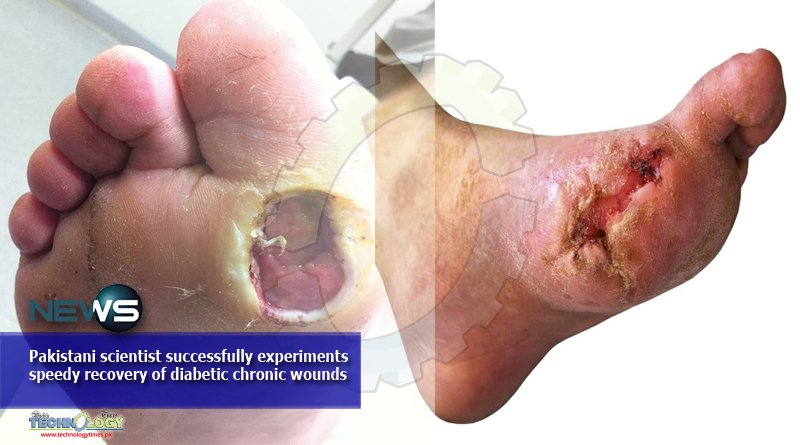Oxygen generating polymeric nanofibers that stimulate angiogenesis and show efficient wound healing in a diabetic wound model. Pakistani scientist successfully experiments speedy recovery of diabetic chronic wounds

Several advanced treatments, such as the skin derived from bioengineered silver alginate dressings and superabsorbents, are currently available on the market for diabetic chronic wounds. These treatments are used for various injuries, including diabetic wounds or deep burn injuries. For this purpose, some strategies contribute to the production of a potential bandage which can be used as a promising platform to heal damaged tissues. Modified fibers can be used as outstanding scaffolds in controlling drug/oxygen release over a long time period, which can be tuned by the physicochemical structure of nanofiber.
It has been shown that nanomedicine in combination with some hormone or oxygen-producing agents can improve diabetic wound healing. Also, oxygen-carrying nanocomposites can improve the recovery rate of chronic diabetic wounds by supplying the oxygen upon external stimulation. By creating similar environments like those of body tissues, 3D nano scaffolds offer a new perspective in cell culture, drug delivery, and tissue repair.
Polycaprolactone (PCL), is a biocompatible, hydrophobic, and non-toxic polymer, is widely used as a drug carrier to prepare implantation devices and biomedical grafts in the tissue engineering field. Many oxygen releasing agents have been tested for their potential in improving diabetic wounds but oxygen releasing biomaterials, especially peroxide-based biopolymers, are of special interest for their tunable properties in terms of controlled oxygen generation at the wound site.
Sodium percarbonate (SPC) is one of the potent peroxide-based oxygen-generating materials that have been found effective for the treatment of dermal wounds. SPC is a moderate water-soluble salt (<0.01% at 20°C) that releases hydrogen peroxide and ultimately oxygen on decomposition.No one has investigated its effectiveness for the treatment of diabetic wounds models yet, so this study was aimed to explore the therapeutic features of SPC for diabetic wound applications.
In the present study, PCL polymer matrix based electrospun nanofibrous wound dressings loaded with inorganic SPC salt that can chemically generate oxygen in-situ.
The study includes the assessment of sustained oxygen release from prepared dressings for a minimum of 4 days, followed by evaluation of their efficacy through in-vitro cell studies, and a CAM assay to evaluate their angiogenesis potential and healing response of a full-thickness chronic diabetic wound rat model.
